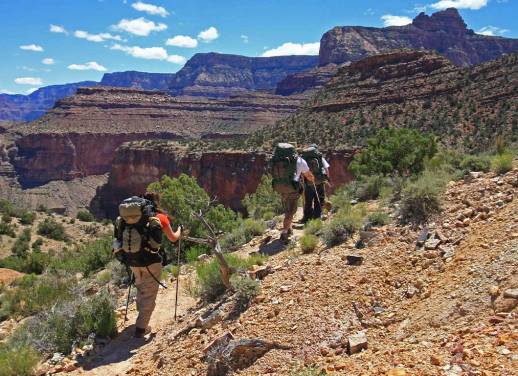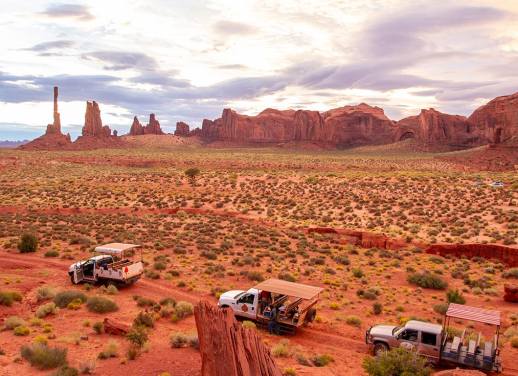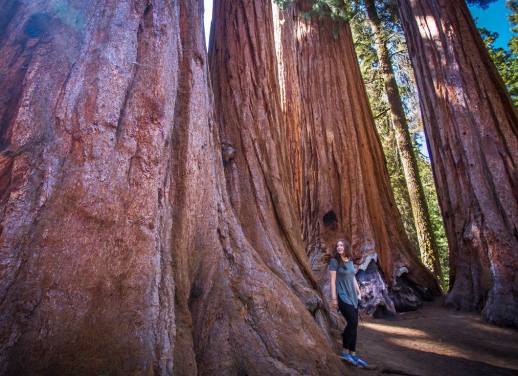If someone gave you paper and pencil and asked you to list the 50 US states, we’re guessing Utah wouldn’t leap to mind first.
Sandwiched between big players like Arizona, Colorado and Nevada, it’s almost the quiet achiever of the south-west. But it shouldn’t be. In 2012 a Gallup poll named it the best US state to live in, based on a variety of lifestyle factors (we suspect sheer natural beauty was a big one); plus US national forests, trustlands, monuments and parks cover an incredible 70% of the land. Throw a stick and chances are you’ll hit something spectacular (maybe check the coast is clear first, or at least choose a small stick). If you watched Road Runner and Wile E. Coyote chase one another through the cartoon deserts as a kid and thought, ‘I’d like to visit there’, Utah is about as close as you’re going to get.
Don’t believe us? Still think Nevada has the monopoly on desert sunsets? We have the photos to prove you wrong.
Bryce Canyon
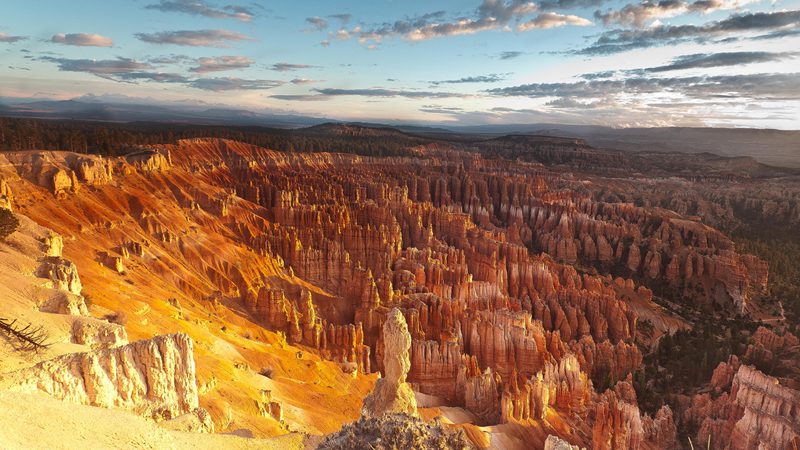
The hoodoos of Bryce Canyon. Image Al King, Flickr
Ask any school kid in the world about the Grand Canyon and they’ll know immediately what you’re talking about. Bryce Canyon doesn’t have quite the same cachet. But that’s a good thing in a way – it means fewer crowds. And don’t worry, Bryce is just as spectacular as its Grand cousin over in Arizona. It’s filled with thousands of pop-up, rose-coloured hoodoos (twisty rock pillars) – basically the most photogenic form of erosion yet discovered. At sunset, as the light hits the sandstone and the colours come alive, increasing your visible spectrum by a factor of 10.
Monument Valley
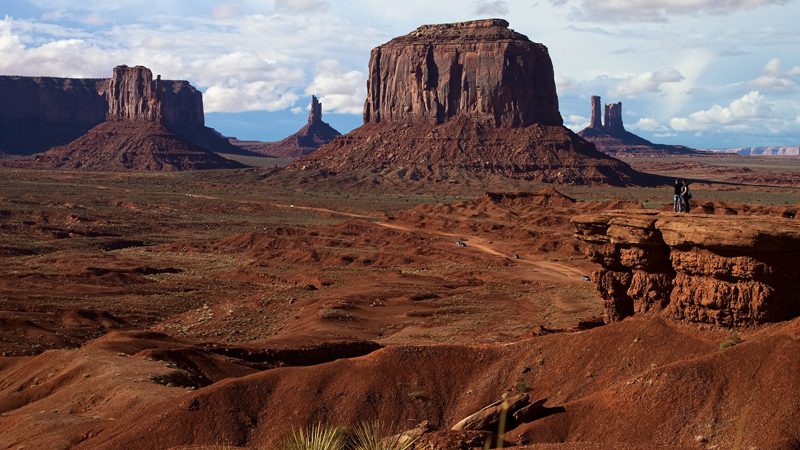
Monument Valley. It’s okay to be impressed. Image Nicolas Vollmer, Flickr
For anyone who’s ever seen a Road Runner sketch, Monument Valley will feel very familiar. The red landscape, with its sheer sandstone buttes rising thousands of feet from the valley floor, is basically the inspiration for every cartoon desert ever. Hollywood loves filming here too, which isn’t surprising. It’s one of the most dramatic areas of the famed Colorado Plateau and a fantastic drive for any intrepid road-trippers. Hot tip: bring a wide angle lens, there’s just too much landscape for a regular camera to capture.
Zion
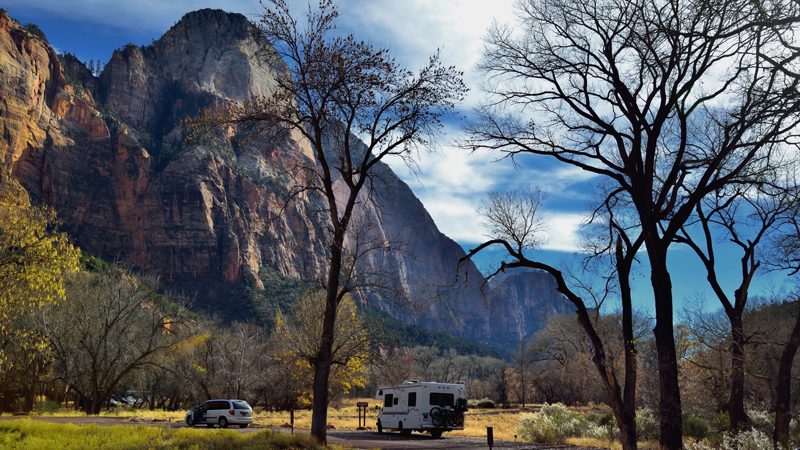
It takes a good camera just to fit Zion in the frame. Image Mark Stevens, Flickr
Zion is the figurative jewel in the metaphorical crown of Utah. When your annual visitor count tops 2.7 million, you know you’re a serious National Park. It’s got all the usual suspects: soaring red and white cliffs, twisted rock formations and winding canyons, but the low elevation and mesa-top wildflowers give it a more colourful feel than the more arid parks of the east. Two things you must do here: walk The Narrows and climb to Angel’s Landing. Google images do not do these wonders justice.
Grand Staircase-Escalante National Monument
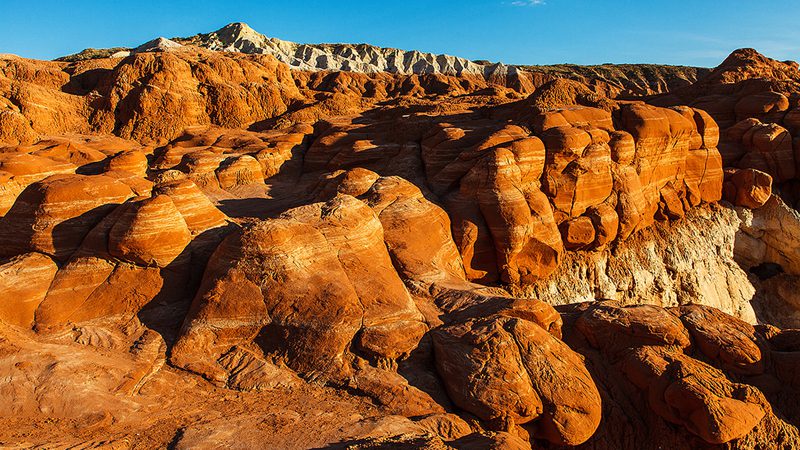
The multi-layered strata of the Grand Staircase. Image Marvin Phelps, Flickr
There aren’t many places on earth you can legitimately gaze on 260 million years of geological development, piece by piece. Utah’s Grand Staircase is one of them. Rising up from the Grand Canyon to Bryce, the Grand Staircase is a bit like what would happen if you cut the earth in half to try and count the rings. It’s 150 miles of rock strata, exposed by a few millennia of erosion. Tourist infrastructure is limited to the outskirts of the Monument, so the interior is about as ‘wild frontier’ as you’ll get in the United States these days.
Lake Powell
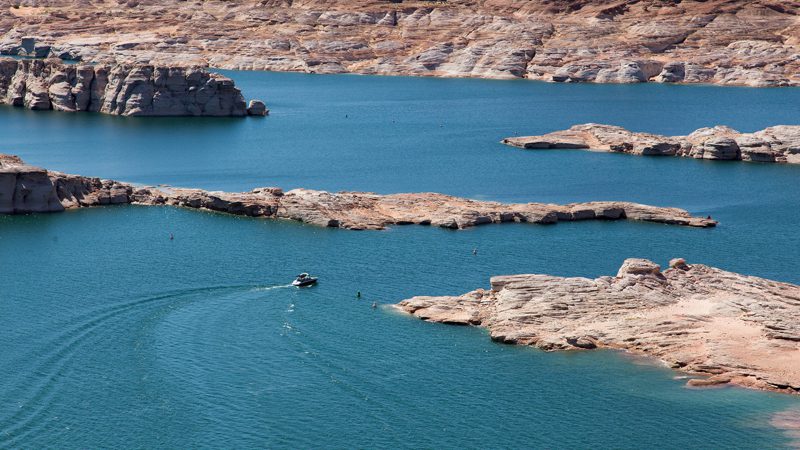
The blue waters of Lake Powell. Image grosgerald58, Flickr
The answer to the questions, ‘Where does Utah keep all the water?’ and ‘What would it look like if you flooded the Grand Canyon?’, Lake Powell is one of southern Utah’s major natural drawcards, and a popular holiday and boating spot for locals. It was formed in a bit of controversy, when a massive dam construction in the 1960s flooded nearby Glen Canyon. But the results are still beautiful. Narrow channels and tributary canyons branch off the main lake (perfect for some aquatic exploration) and the sunsets over the red rocks and clear water are something to see.
Canyonlands National Park
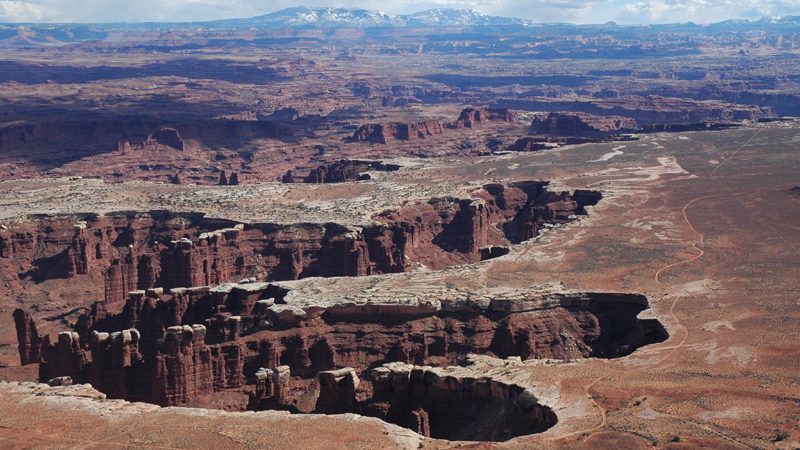
Move over Grand Canyon. Image Rob Lee, Flickr
The Canyonlands National Park really lives up to its name. The Colorado and Green Rivers cut the park into a Y shape filled with some of the most spectacular canyon scenery in the American Midwest. Spires of rock rise up from the valley floor, serpentine ravines wind their way through the landscape, and there are overviews aplenty for panoramic photo shoots as the sun goes down. What more could you want? If you haven’t managed to check them out in Bryce, Canyonlands has an impressive hoodoo collection in the Needles District, about 75 minutes south of Moab.
Dinosaur National Monument
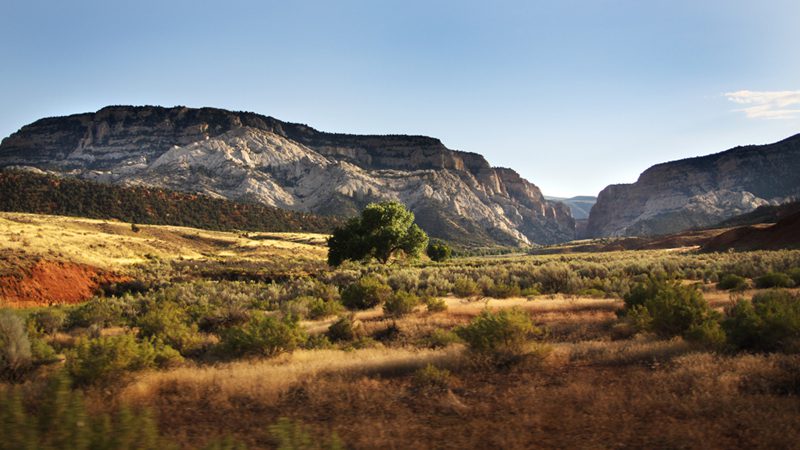
Dinosaur National Monument. Those dinosaurs had the right idea. Image Helena Price, Flickr
Straddling the Utah-Colorado border is the Dinosaur National Monument, one of America’s premier fossil beds. The good news (from Utah’s point of view) is that nearly all the bones are on the Utah side of the state line. Regardless of which direction you’re coming from though, the Monument is a great place to visit. Budding palaeontologists should check out the Quarry Exhibit, a partly excavated wall of rock with about 1600 bones protruding from it, and a guided hike with the local rangers is a must.
Inspired? Check out Utah for yourself on Intrepid’s Utah Parks Circuit adventure.


